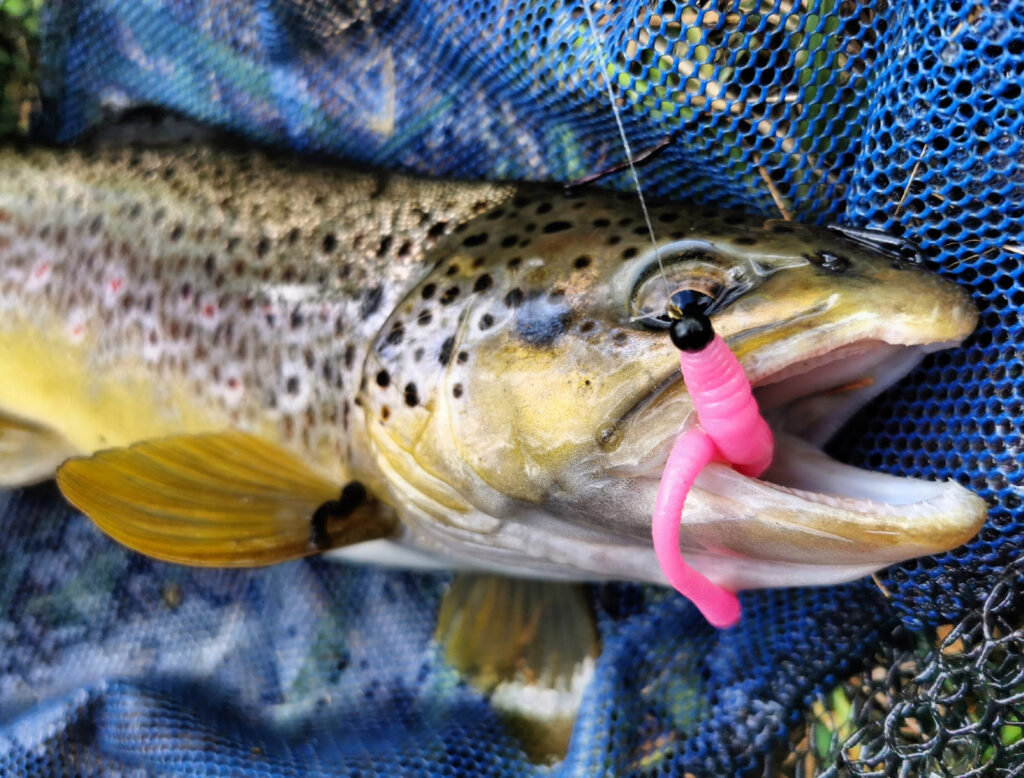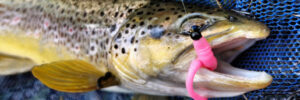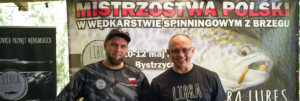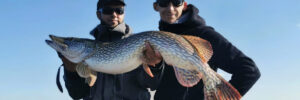Opening the season with Libra Lures
January 1st (depending on the region, of course) is just as important a date for trout fishermen as May 1st is for pike anglers, or Children’s Day is for zander anglers. Elaborate preparations involve not only the boxes of lures, the contents of which are often a well-kept secret, but also the favorite fishing spots. Each of us has our favorite “sure bets,” but it’s worth staying open to new things, as they can often “open up the water”.
Until recently, soft lures were somewhat neglected. Yes, many anglers adopted perch lures for trout fishing, but it was only with the appearance of lures dedicated to catching “dots” on the market that revolutionized the catching of these beautiful fish. Therefore, in order to meet the needs of anglers, we will try to familiarize you with both the rigging, handling, and selection of individual models from the ever-growing Libra Lures range.

Winter – the time of the “worm”.
Icy water, a poor food base, and fish recently tired from spawning. These are the winter conditions that prevail over most waters in short. It’s not an easy time, but it absolutely doesn’t mean we’re out of luck. The key to success is meeting three basic conditions. The first is finding places where the fish will be. Since we have already said that the water is cold, it is well oxygenated. Therefore, fish do not have to, as in summer, position themselves in the rapids where life-giving oxygen is the highest. In addition, the exhaustion from spawning and the lack of food dictate instinctively to conserve energy. Therefore, fish will gladly choose slightly deeper places with a slight pull. The second necessary condition is the selection of a lure, which we will depend on both the type of food that the fish feed on and its size. The energy balance is extremely important here – sluggish fish are much more likely to spend energy hunting for a larger bite than to waste valuable strength chasing after “crumbs.” Imitations of earthworms, therefore, Dying Worm and Fatty D’Worm (also in the “Tournament” version) are a basic bait for many anglers. A fleshy, enticingly undulating “worm” is a tasty bite that no hungry trout will miss. Check if your stores have expanded their assortment with Flex Worm. This imitation of an earthworm with a curled tail will tempt many spotted fish – I’m sure of it! Of course, in addition to worm copies, it’s worth devoting one compartment of the box to several copies of fat Largo or other larval imitations, such as the Turbo Worm, which is not yet known to fish.
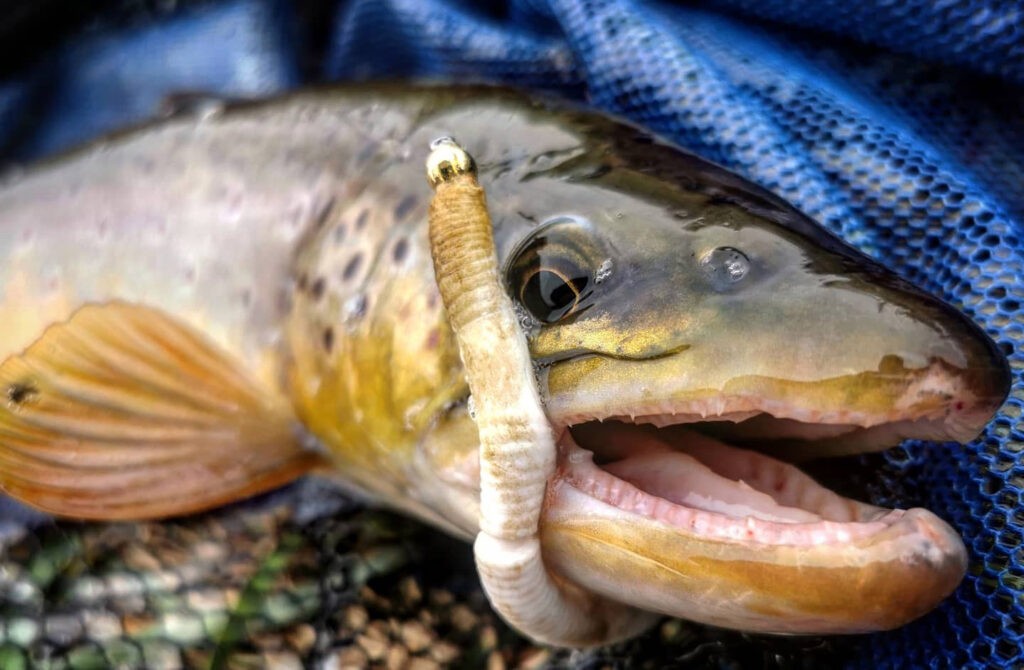
Rigging and presentation technique.
Classic rigging using a jig head or a barbless fly hook with a tungsten bead is one of the most popular and commonly used methods. However, this is not the end of the possibilities of rigging lures from the Libra Lures brand. There are so many of them that I would need several more pages for this. However, to spare you that, I encourage you to download the latest catalog. You will find in it the proposed methods of rigging each of the lures, including the recommended hook sizes. A great “cheat sheet” for beginners and a valuable reference for experienced anglers. Personally, I stick to the rule that it’s better to use a slightly shorter hook than one that is too long. This way, we don’t “kill” the elasticity of the bait by making it too stiff. Another argument in favor of such an approach is the fact that fish usually attack the bait “from the head,” even if the hook is very short.
Ok, we have the hook chosen. The next task will be to choose the weight, which is a crucial issue. One of the greatest advantages of Libra Lures is that they are made of soft, highly elastic material that floats. The buoyancy of the bait, combined with the appropriate weight, ensures the natural behavior of the bait in the water, which is crucial to outsmart a cautious trout. The size of the tungsten bead or the weight of the jig head must be chosen depending on several variables, such as the depth of the fishery, the strength of the line, the buoyancy (type) of the bait, the activity of the fish, and the angle at which we present the lure. When casting against the current, we must remember that the rushing water, in a way, pushes our bait to the bottom, and even a small weight will allow us to bring the bait to the bottom. We have the opposite situation when leading against the current, although this technique is probably the least used.
In this way, from rigging, we have come to presentation, or leading techniques. As you can imagine, it will depend on the character of the specific fishing spot, our positioning possibilities, and even the depth of the fishery. The most popular and highly effective technique is leading with the so-called “fan,” when we use the flowing water to swim our bait as naturally as possible. The long Dying Worms and Fatty D’Worms react to any movement of the water, and often just keeping the line taut is enough to let the current do the rest. The extremely soft plastic will even react to the slightest movement of the wrist. At this point, it’s worth mentioning the new Flex Worm, which, when delicately animated, shows its best side by straightening out and returning to its “curled up” position, like a real drifting earthworm. Definitely worth a try!
Trout wand, or a few words about the equipment.
The trout rod, or a few words about equipment. Choosing a set is not just a chapter but probably a whole book. Here, I will touch on this topic very generally, referring to a few principles that are worth following when choosing the necessary equipment. It’s known that there are as many trout sets as there are anglers and fisheries visited by them. Different rules apply to fishing in a small mountain stream and a large river inhabited by large specimens. However, let’s remember that we first choose our equipment based on the baits we intend to serve to our potential catch. The technology in which we produce modern rods and lines means that apparently ultralight tackle, with a bit of practice and skill in reeling in, allows us to land a record-breaking fish without the need to exhaust it with a long struggle. It is accepted that, at least initially, the optimal fishing rod will be in the range of 160-210 cm with a top casting weight not exceeding 10g. The complement will be a small reel with a precise drag and good winding of thin (0.05-0.08) braided line. In case of severe frost, it is worth securing a spare spool with a diameter of 0.12-0.16 mm. Such a set is practically owned by every spinning fisherman and will be sufficient for a beginner. Of course, there are more and more fishing rods available on the market, whether mass-produced or build for individual orders, which will take our fishing to an even higher level. However, to start your adventure with Libra Lures, you do not have to invest a lot of money in a set.
In just a few days, we will meet at the trout waters throughout Poland. Remember to have a landing net with a rubber mesh, wet your hands before handling the fish, and handle the catch carefully. And those, especially using the mentioned lures, I believe will not be lacking! Trust the Libra worms, and you will quickly see their enormous effectiveness, and fishing or playing with them will bring the angler a lot of satisfaction and joy.
